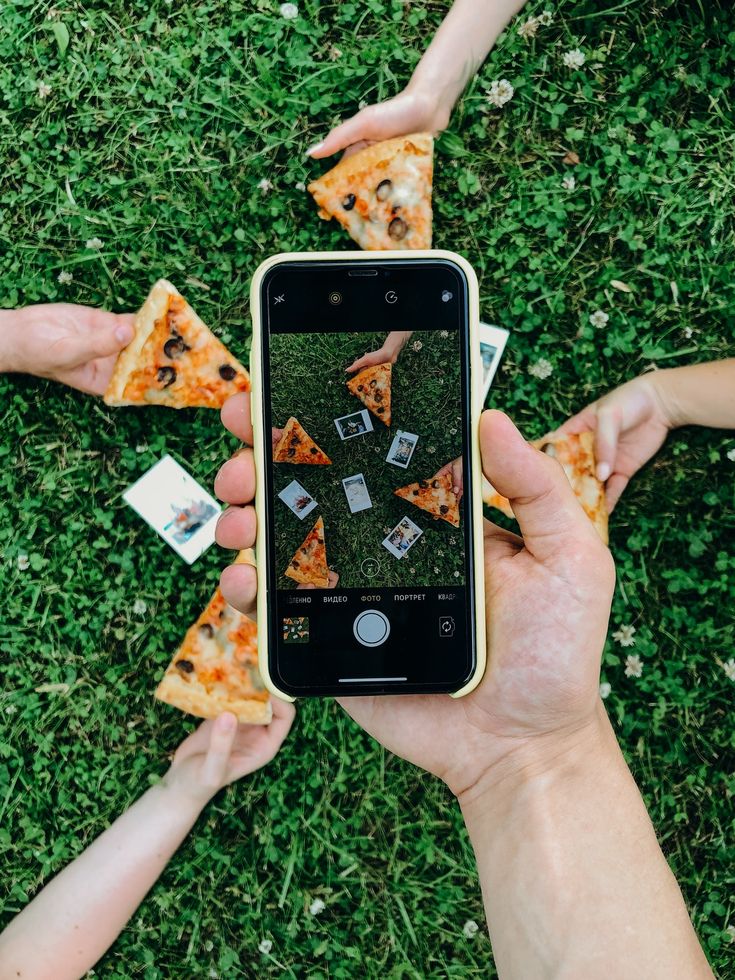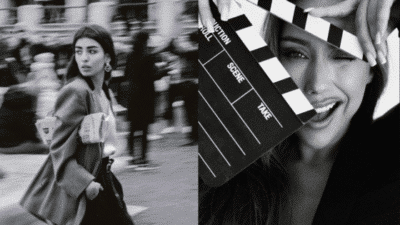Smartphone cameras have become a big part of daily life, letting you take photos wherever you go. With just a few simple changes, you can improve the quality of your images and capture moments that matter.
Learning a handful of easy tips can help you get the most out of your phone’s camera, no matter your experience level. Whether you use your camera for special occasions or everyday snapshots, these quick strategies can make a real difference in your photos.



1) Keep your lens clean for sharp photos
A clean lens is one of the easiest ways to improve your smartphone photos. Dust, fingerprints, and smudges will blur your images and make them look dull.
Before you take a photo, take a moment to gently wipe your lens with a soft, lint-free cloth. Microfiber cloths work well and won’t scratch the glass.
Avoid using your shirt or rough materials, as these can add tiny scratches. If you’ve been at the beach or outdoors, check for sand or grit before cleaning.
Keeping your lens clean isn’t just about sharpness. It also helps your camera focus better and produces more accurate colors.
Make this a habit each time you reach for your phone. Clean lens, clear photo.


2) Use natural light and avoid flash when possible
Whenever you can, try to use natural light for your photos. Daylight from windows, open doors, or being outdoors will usually give your images a softer and more natural look.
Flash from your phone is often harsh and can create strong shadows or washed-out skin tones. This can make your photos look less appealing and less true to life.
If you’re indoors, stand near a window or another source of gentle light. Light from the side or at an angle helps to add depth without creating distracting highlights.
Artificial lights can sometimes add yellow or blue tones, which change how colors appear. Sticking to natural light reduces this issue and helps your images look more accurate.
If you need extra light, try to bounce it off a wall or ceiling instead of aiming it directly at your subject. This creates a softer effect and avoids harsh highlights.


3) Tap the screen to focus on your subject
Making sure your subject is sharp is simple—just tap the area you want in focus on your phone’s screen. Most smartphones highlight the chosen spot so you know it’s set.
Tapping to focus is especially useful for portraits or close-ups. When photographing people, tap on their eyes to keep them sharp and clear.
Sometimes, automatic focus doesn’t pick the right part of your scene. By tapping, you make sure the important part of your photo stands out.
If you’re taking pictures in lower light, tapping to focus helps your camera adjust more accurately. This can stop blurry or soft-looking shots.
Using this feature takes only a second, but it can make your photos look more professional. Try it the next time you snap a picture.


4) Avoid digital zoom; get closer instead
When you use digital zoom on your smartphone, you lose image quality. Details become less sharp, and the photo can look grainy or pixelated.
Instead of pinching to zoom, take a step closer to your subject whenever you can. Moving closer helps keep your photos clear and detailed. This is especially important for portraits or shots with important features.
If you can’t get physically closer, it’s better to take the photo without zoom and crop it later while editing. Cropping after the fact can still preserve more quality compared to digital zoom.
Some smartphones have optical zoom, which keeps better quality, but most models rely mainly on digital zoom. For best results, stick to your phone’s regular lens and simply change your position.
Getting closer also helps capture more of a scene’s emotion or detail, making your photos more engaging. Stepping in might take a little more effort, but your pictures will look better.


5) Shoot in HDR mode for better dynamic range
HDR stands for High Dynamic Range. When you turn on HDR mode on your smartphone camera, it captures several photos at different exposures and combines them into one image.
This process helps balance out bright and dark areas. As a result, you’ll notice more details in the shadows and highlights, especially in tricky lighting conditions like sunsets or scenes with backlighting.
Using HDR can make landscape photos look more vivid. It’s also useful indoors if you have bright windows alongside dark corners.
To get the best results, hold your phone steady while taking an HDR shot. Most phones handle everything automatically, so you just have to tap the HDR icon and shoot.
HDR isn’t ideal for moving subjects because combining multiple exposures can cause blur. For scenes with lots of movement, it’s better to switch HDR off.
Try experimenting with HDR mode when you see harsh light and dark contrasts. It’s a simple way to reveal details you might otherwise miss.


6) Experiment with angles and perspectives
Changing your angle can completely transform a photo. Try holding your phone above your head or crouching down low to see your subject in a new way.
Looking up at your subject can make them appear more powerful, while shooting from above can give you interesting flat lay shots.
Don’t be afraid to tilt your phone or find creative positions. Sometimes, the best shot comes from an unexpected angle.
Explore perspectives by including different foreground or background elements. Using objects close to your lens can add depth and make your image more dynamic.
Experimenting with reflections, like capturing your subject in a puddle or a mirror, can also add a unique touch.
Keep moving around your subject rather than staying in one spot. You might discover a better photo from a side view or with your subject framed by their surroundings.
The goal is to find angles that capture your subject’s best features or tell a more interesting story. Your willingness to explore can lead to eye-catching results.


Understanding Smartphone Camera Settings
Learning how different camera settings work lets you get sharper, brighter, and more creative photos. Small adjustments can solve problems like blurry faces in low light, oddly exposed skies, or subjects out of focus.
How Exposure, Focus, and ISO Impact Your Photos
Exposure refers to how much light reaches your camera sensor. If your photo looks too dark or too bright, adjusting exposure can fix it. Many phones let you slide your finger up or down on the screen to control this.
Focus is what keeps your subject looking crisp. Tap the spot on your screen where you want the sharpest detail. Locking focus prevents unwanted blur if your subject doesn’t move.
ISO controls sensitivity to light. A low ISO (like 50 or 100) keeps your photos clean with less grain, best for bright conditions. Higher ISO helps in low light but can introduce noise. Some camera apps allow you to change ISO manually for better control.
A quick overview:
| Setting | What it Does | When to Adjust |
|---|---|---|
| Exposure | Brightens/Darkens image | Skies too bright or dark |
| Focus | Sharpens a specific area | Subject isn’t clear |
| ISO | Light sensitivity | Very bright or low light |
Making the Most of Your Camera App Features
Your camera app offers features beyond just taking a snapshot. Turn on the grid in your settings to help line up horizons and subjects, keeping your photos straight and balanced.
Explore modes like night, portrait, or pro/manual. Night mode helps you capture scenes in low light. Portrait mode blurs the background, making your subject stand out. Pro or manual modes allow you to control settings like ISO and shutter speed directly.
Quick tips:
- Tap to focus, then slide to set exposure.
- Try different shooting modes to match the scene.
- Use a tripod or sturdy surface for steady shots in low light.
Experiment with these built-in tools to adapt to a variety of situations and boost your photo quality without extra equipment.
Editing Your Smartphone Photos
Editing your smartphone photos helps bring out detail and fix common issues like poor lighting or muted colors. The right tools and easy edits can make your images look more polished and expressive.
Choosing the Right Photo Editing Apps
Start by picking an editing app that feels intuitive to you and fits your needs. Some popular choices include Snapseed, Adobe Lightroom Mobile, and VSCO. These apps offer a range of features from basic adjustments to more advanced tools, without needing complex software.
Comparison Table:
| App Name | Best For | Cost | Key Features |
|---|---|---|---|
| Snapseed | All skill levels | Free | Easy filters, advanced tools, selective edits |
| Lightroom Mobile | Detailed color control | Free/Paid | Professional adjustments, sync with desktop |
| VSCO | Filters and social sharing | Free/Paid | Film-like filters, simple interface |
When choosing, think about what you want to do—whether it’s quick touch-ups or deeper editing. Try a few apps and see which workflow feels most comfortable for you.
Simple Edits to Enhance Lighting and Color
Begin with adjustments to brightness, contrast, and exposure. This can help your photo look more vibrant without overdoing it. Use the slider tools in your editing app to make small, gradual changes.
Consider increasing saturation slightly for richer colors, but avoid pushing it too far since this can make the image appear unnatural. Use the highlights and shadows sliders to recover detail in bright or dark areas.
Don’t forget cropping and straightening. These simple steps can improve composition and remove distracting edges. Focus on clarity, keeping the edit natural so the photo still looks real and inviting.
- 360shares
- Facebook0
- Pinterest360
- Twitter0


